WEYBRIDGE, England — A cabinet of curiosities was a room, often in a wealthy person's manor or castle, dedicated to the preservation and display of a varied collection of objet, often entirely unrelated by theme or category. These items were arranged to fascinate a viewer, to demonstrate the collector's erudition and to create a sense of awe at their dominion. They were often freaky, and a wee bit janky.
Much of the same could be said for the Brooklands Museum — a delightful transportation-oriented hodgepodge plopped in the middle of the English countryside, near Weybridge — though it comes by it far more naturally than some minor lord's stockpile of Galapagoan tortoise shells and Norwegian sparring spears. And this is exactly why you must visit.
The site houses one of the most eclectic hoards of vehicular ephemera ever gathered. Do you want to see a group of perfectly preserved or restored $400,000 post-World War I Brough motorcycles? How about one of Ayrton Senna's F1 McLaren show cars? A skinless and wingless Vickers Wellington World War II bomber with its geodesic alloy structure exposed? Or a wooden-framed 1917 Vickers Vimy like the one used for the first crossing of the Atlantic?

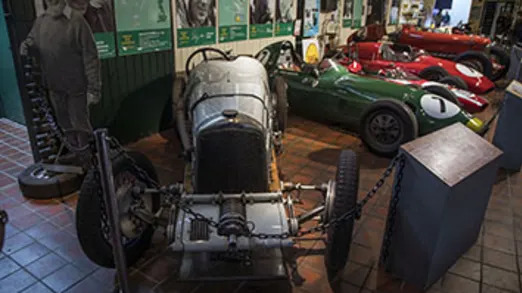
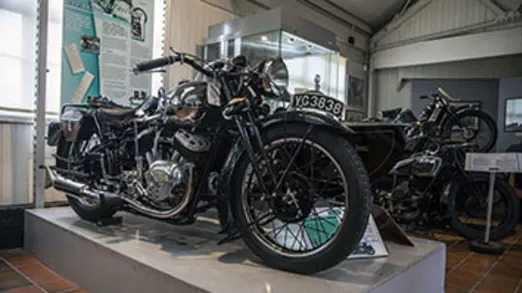

Perhaps you fancy the hand-built 1933 Napier Railton, a silver-billet bullet wrapped around a top-speed record-setting 24-liter W12 aircraft engine? Or speed king Malcolm Campbell's actual workshop and tools? Or incidentally strolling by a lawn-parked grouping of club members' cars from the neo-classical 1970s Panther motor car company?
If none of that is up your alley, there are also many examples of the genius of aeronautical engineer/savant Barnes Wallis. Life-size versions of the "Bouncing" and "Earthquake" bombs he designed to destroy German infrastructure in WWII. Or the vacuum-sealed Stratospheric Chamber and supersonic wind tunnel that Wallis constructed on-site to help the British Air Force design planes that could achieve Mach 2.
Did we mention there's also a 1910 Crowley Flat Twin, the radical engine from the first airplane designed and built by a British woman? A six-wheeled 1976 Range Rover "Commando" aviation runway rescue truck, and a 4-D theater that screens interactive filmic iterations of historical automotive and aeronautical experiences? (Note: The fourth dimension is apparently not time, but shakable seats.)
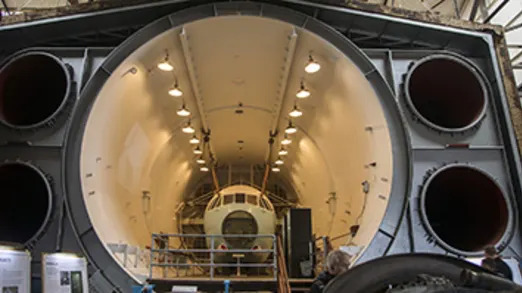
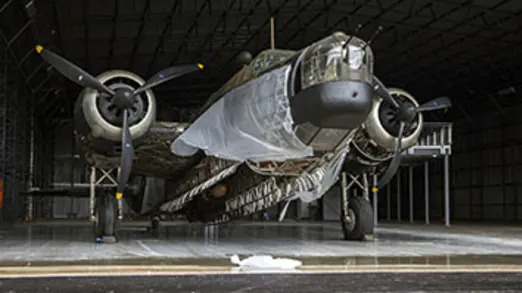


Oh, and off in a rainy courtyard outside, behind the bathrooms, there's the first Concorde ever built, which you can climb up into and sit inside to fulfill your fantasy of being a louche Space Age business traveler. That is, so long as your fantasy includes watching a treacly devotional video about supersonic travel improbably (and wonderfully) scored by Queen's " Don't Stop Me Now."
Why in the world is all of this here? Well, first off because Brooklands was originally a racetrack. In fact, it was the first purpose-built automotive racetrack in the world, constructed in nine months starting in 1906, by hand, by 1,500 Navvies — infrastructural manual laborers better known for digging canals. The track was a 2.75-mile oval of concrete with a couple of bends and an additional half-mile finishing straight.
To help prevent the shoddy, balloon-tired vehicles of the era from flying off the edge of the elevated circuit, the track was steeply banked, nearly 30 feet high in some places. This was not an entirely effective precaution, and there apparently are many period photos of racers and/or their vehicles becoming unfortunately airborne.
Because the track's surface was hand-laid in approximately one zillion patches of variously sourced concrete, it wore unevenly, causing even greater issues for drivers, particularly at speed. Still, the track stayed in consistent use until 1939, when it was bombed by the Germans during WWII.
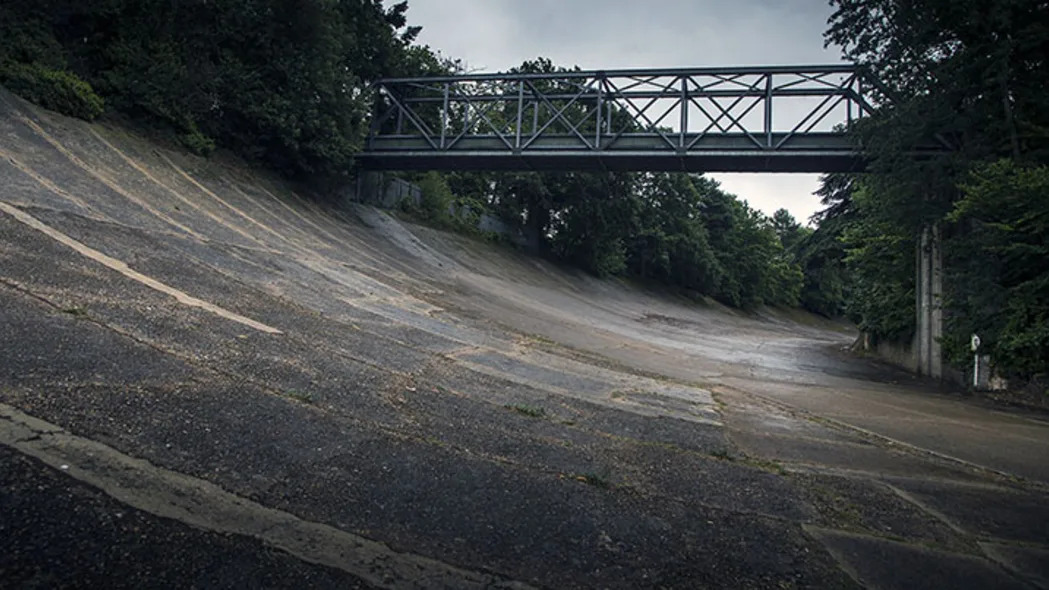
In the meantime, the big grassy area in the middle of the oval had become one of the country's first airfields. Flights began in 1908, a flight school opened in 1910 and famed British aeronautics company Vickers Aviation opened a factory on-site to support the war effort in 1915. It has continued, in various permutations and successors, into present day.
The site was thus the location of nearly every major advancement in British (and often global) aeronautical and military achievement, and it is where Vickers set up its factory for production of its alliteratively named Viking, Valetta, Varsity, Viscount, Vanguard and VC10 passenger and cargo aircraft. It was also the build site for significant portions of the massively enticing, ill-timed, needle-nosed supersonic king of the skies, the aforementioned Concorde, an Icarian invention and the closest wealthy civilians have ever come to time travel. Bow and weep, budget airlines passengers.
A portion of the site was turned into a museum in 1987, incorporating a grab bag of original structures, including a clubhouse, factory, garage and outbuildings — many of which now house random assortments of objects and some of which house cafes, theaters and gift shops. Portions of the original track still exist as well, and though not much can be accomplished racing-wise on that portion, the museum education program still drives kids around the straight and some of the banked portions, at secure velocities, to demonstrate basic ideas of physics and fun.
The remainder of the site has been appropriated by a tremendous office park. Many aerospace companies still have their headquarters here, and there's an outpost of ubiquitous British retailer Marks & Spencer.
Also present is a tremendous Mercedes-Benz World brand experience center, which showcases the premier vehicular product of the country that the site was, for much of its existence, wholly dedicated to defeating and destroying. The British excel at collection and categorization, and at innovation. But their true calling is in irony.
Related Video:
Much of the same could be said for the Brooklands Museum — a delightful transportation-oriented hodgepodge plopped in the middle of the English countryside, near Weybridge — though it comes by it far more naturally than some minor lord's stockpile of Galapagoan tortoise shells and Norwegian sparring spears. And this is exactly why you must visit.
The site houses one of the most eclectic hoards of vehicular ephemera ever gathered. Do you want to see a group of perfectly preserved or restored $400,000 post-World War I Brough motorcycles? How about one of Ayrton Senna's F1 McLaren show cars? A skinless and wingless Vickers Wellington World War II bomber with its geodesic alloy structure exposed? Or a wooden-framed 1917 Vickers Vimy like the one used for the first crossing of the Atlantic?




Perhaps you fancy the hand-built 1933 Napier Railton, a silver-billet bullet wrapped around a top-speed record-setting 24-liter W12 aircraft engine? Or speed king Malcolm Campbell's actual workshop and tools? Or incidentally strolling by a lawn-parked grouping of club members' cars from the neo-classical 1970s Panther motor car company?
If none of that is up your alley, there are also many examples of the genius of aeronautical engineer/savant Barnes Wallis. Life-size versions of the "Bouncing" and "Earthquake" bombs he designed to destroy German infrastructure in WWII. Or the vacuum-sealed Stratospheric Chamber and supersonic wind tunnel that Wallis constructed on-site to help the British Air Force design planes that could achieve Mach 2.
Did we mention there's also a 1910 Crowley Flat Twin, the radical engine from the first airplane designed and built by a British woman? A six-wheeled 1976 Range Rover "Commando" aviation runway rescue truck, and a 4-D theater that screens interactive filmic iterations of historical automotive and aeronautical experiences? (Note: The fourth dimension is apparently not time, but shakable seats.)




Oh, and off in a rainy courtyard outside, behind the bathrooms, there's the first Concorde ever built, which you can climb up into and sit inside to fulfill your fantasy of being a louche Space Age business traveler. That is, so long as your fantasy includes watching a treacly devotional video about supersonic travel improbably (and wonderfully) scored by Queen's " Don't Stop Me Now."
Why in the world is all of this here? Well, first off because Brooklands was originally a racetrack. In fact, it was the first purpose-built automotive racetrack in the world, constructed in nine months starting in 1906, by hand, by 1,500 Navvies — infrastructural manual laborers better known for digging canals. The track was a 2.75-mile oval of concrete with a couple of bends and an additional half-mile finishing straight.
To help prevent the shoddy, balloon-tired vehicles of the era from flying off the edge of the elevated circuit, the track was steeply banked, nearly 30 feet high in some places. This was not an entirely effective precaution, and there apparently are many period photos of racers and/or their vehicles becoming unfortunately airborne.
Because the track's surface was hand-laid in approximately one zillion patches of variously sourced concrete, it wore unevenly, causing even greater issues for drivers, particularly at speed. Still, the track stayed in consistent use until 1939, when it was bombed by the Germans during WWII.

In the meantime, the big grassy area in the middle of the oval had become one of the country's first airfields. Flights began in 1908, a flight school opened in 1910 and famed British aeronautics company Vickers Aviation opened a factory on-site to support the war effort in 1915. It has continued, in various permutations and successors, into present day.
The site was thus the location of nearly every major advancement in British (and often global) aeronautical and military achievement, and it is where Vickers set up its factory for production of its alliteratively named Viking, Valetta, Varsity, Viscount, Vanguard and VC10 passenger and cargo aircraft. It was also the build site for significant portions of the massively enticing, ill-timed, needle-nosed supersonic king of the skies, the aforementioned Concorde, an Icarian invention and the closest wealthy civilians have ever come to time travel. Bow and weep, budget airlines passengers.
A portion of the site was turned into a museum in 1987, incorporating a grab bag of original structures, including a clubhouse, factory, garage and outbuildings — many of which now house random assortments of objects and some of which house cafes, theaters and gift shops. Portions of the original track still exist as well, and though not much can be accomplished racing-wise on that portion, the museum education program still drives kids around the straight and some of the banked portions, at secure velocities, to demonstrate basic ideas of physics and fun.
The remainder of the site has been appropriated by a tremendous office park. Many aerospace companies still have their headquarters here, and there's an outpost of ubiquitous British retailer Marks & Spencer.
Also present is a tremendous Mercedes-Benz World brand experience center, which showcases the premier vehicular product of the country that the site was, for much of its existence, wholly dedicated to defeating and destroying. The British excel at collection and categorization, and at innovation. But their true calling is in irony.
Related Video:
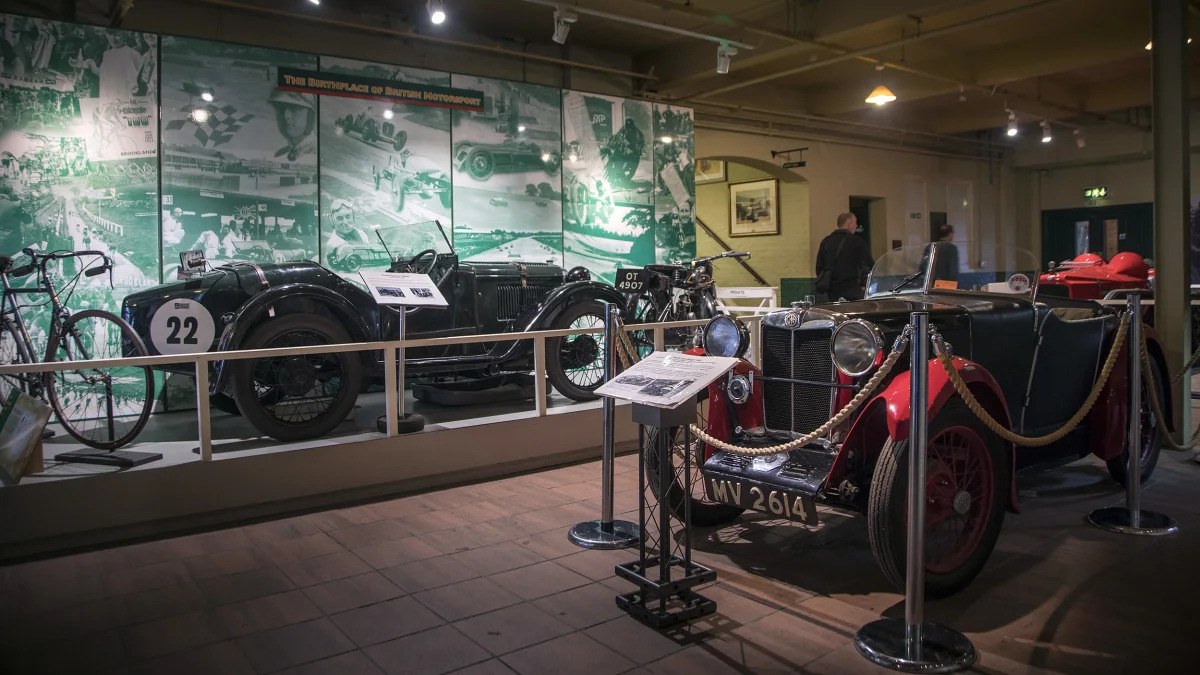









Sign in to post
Please sign in to leave a comment.
Continue